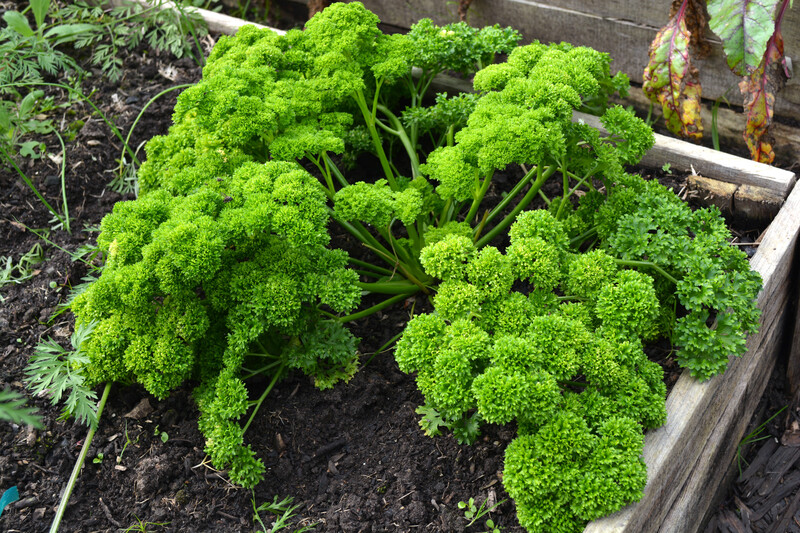Gardening: An Eco-Friendly Approach to Climate Change
Posted on 22/09/2025

Gardening: An Eco-Friendly Approach to Climate Change
In a world grappling with the severe consequences of global warming and environmental degradation, gardening emerges as a simple yet powerful ally in the fight against climate change. Whether you cultivate a small balcony garden or manage a thriving backyard ecosystem, every green space plays a role in promoting sustainability. This article delves into how eco-friendly gardening practices can mitigate climate change, the science behind it, and actionable steps you can take to transform your gardening routine into an impactful environmental movement.
- What is Sustainable Gardening?
- How Gardening Combats Climate Change
- Benefits of Eco-Friendly Gardens
- Climate-Smart Gardening Practices
- Creating a Biodiverse Garden for Climate Resilience
- Urban Gardening: An Urban Solution
- Overcoming Challenges in Eco-Friendly Gardening
- Conclusion: Cultivating Change through Gardens
What is Sustainable Gardening?
Sustainable gardening--also known as climate-friendly or eco-conscious gardening--refers to cultivation methods that are environmentally responsible and resource-efficient. Unlike traditional gardening, which often relies heavily on chemical fertilizers, pesticides, and excessive watering, sustainable gardening encourages natural processes, supports biodiversity, and minimizes environmental harm.
- Resource Conservation: Utilizes rainwater, compost, and mulches to reduce waste and reliance on synthetic inputs.
- Biodiversity Promotion: Incorporates diverse plant species and attracts essential pollinators.
- Soil Health Maintenance: Avoids over-tilling, enhances soil life, and reduces erosion.
- Carbon Sequestration: Uses plants to absorb carbon dioxide from the atmosphere.
Embracing eco-friendly gardening techniques is a critical step toward a more sustainable and climate-resilient future.
How Gardening Combats Climate Change
The relationship between gardening and climate change mitigation may not be obvious at first glance. However, gardens act as micro carbon sinks, help moderate local temperatures, and support diverse ecosystems. Here are several ways environmentally friendly gardening makes a difference:
1. Carbon Sequestration
Through the process of photosynthesis, plants extract carbon dioxide (CO2) from the air and store it in their tissues and the surrounding soil. Healthy, well-managed gardens can sequester significant amounts of atmospheric carbon, thereby reducing greenhouse gas levels.
2. Enhanced Biodiversity
Gardens that mix native plants, shrubs, vegetables, and flowers create habitats for pollinators and wildlife. This biodiversity helps ecosystems adapt to changing climate conditions and ensures food security through increased pollination.
3. Soil Regeneration
By incorporating compost and organic matter, gardens restore depleted soils, increase water retention, and inhibit erosion--all critical as climate change leads to more extreme weather.
4. Reduction of Urban Heat Islands
In cities, concrete and asphalt absorb and radiate heat. Plants, on the other hand, cool the environment through shade and transpiration. Expanding urban gardens can counteract the 'urban heat island effect' and create healthier neighborhoods.
Benefits of Eco-Friendly Gardens
The environmental advantages of adopting an eco-friendly approach to gardening are extensive. Yet, the rewards go beyond the planet--they also enhance your wellbeing and community!
- Improved Air Quality: Plants filter pollutants and produce oxygen for cleaner, healthier air.
- Water Conservation: Drought-resistant species and efficient irrigation methods minimize water use.
- Reduced Waste: Composting kitchen leftovers and plant debris enriches soil and decreases landfill contributions.
- Positive Mental Health Impacts: Gardening has been shown to reduce stress and boost mood.
- Strengthened Local Food Systems: Growing your own food decreases reliance on long-distance transportation and packaging, further lowering your carbon footprint.
Climate-Smart Gardening Practices
Building a climate-friendly garden doesn't require advanced expertise--just a commitment to sustainable strategies. Here are practical, research-based techniques to get you started:
Choose Native and Drought-Tolerant Plants
Select native plant species adapted to your local climate. They require less water, fertilizer, and maintenance. Incorporating drought-tolerant plants helps conserve water, which is crucial as global temperatures rise.
Composting: Nature's Recycling Process
Composting organic waste (like vegetable scraps, coffee grounds, and yard trimmings) not only diverts material from landfills but also feeds your garden and enhances soil carbon storage. Healthy compost stimulates microbial activity, leading to richer, more resilient soil structures.
Practice Mulching and Water Conservation
- Apply organic mulch--like leaves, bark, or straw--to retain soil moisture and suppress weeds.
- Harvest rainwater using barrels or install drip irrigation systems to minimize evaporation and reduce dependency on drinking water supplies.
Avoid Chemical Inputs
Switch to natural fertilizers or slow-release organics. Use biological pest control, such as encouraging beneficial insects, instead of chemical pesticides. This not only keeps your garden healthier but also protects waterways and local fauna from pollution.
Embrace No-Dig or Low-Till Gardening
Frequent digging or tilling disrupts soil structure, releases stored CO2, and disturbs beneficial microbes. By minimizing disturbance, you increase long-term soil health and carbon sequestration potential.
Promote Plant Diversification and Companion Planting
Diverse gardens are more resilient against pests, diseases, and extreme weather. Use companion planting--pairing compatible crops together--to naturally repel pests and make the most of your available space.
Creating a Biodiverse Garden for Climate Resilience
Biodiversity is a cornerstone of any eco-friendly gardening approach. Richly varied plant and animal communities act as "living shields" against unpredictable weather and invasive species. Here's how you can design your garden for maximum resilience:
- Plant Variety: Incorporate trees, shrubs, perennials, annuals, and groundcovers.
- Attract Pollinators: Grow nectar-rich flowers such as lavender, coneflowers, and sunflowers.
- Create Microhabitats: Add log piles, rock features, or small ponds to nurture insects, amphibians, and birds.
- Native Over Exotic: Prioritize native plants to strengthen local ecosystems and outcompete invasives.
- Avoid Monocultures: Diverse plantings are less susceptible to disease and extreme weather events.
Urban Gardening: An Urban Solution
As cities expand and green spaces decline, the importance of urban gardening grows. Rooftop gardens, community plots, and vertical planting walls are innovative ways to introduce nature back into concrete jungles. They provide urban dwellers with food, combat pollution, and build community resilience to climate emergencies.
Benefits of Urban Eco-Friendly Gardening:
- Reduces Food Miles: Growing food locally slashes emissions from transportation.
- Insulates Buildings: Green roofs regulate indoor temperatures, reducing energy needs for heating and cooling.
- Improves Urban Microclimates: Urban greenery absorbs heat, reduces stormwater runoff, and filters air pollutants.
- Fosters Community Engagement: Shared gardens promote education and environmental stewardship.
Overcoming Challenges in Eco-Friendly Gardening
While sustainable gardening methods are effective, they come with unique challenges, especially as climates shift and resources dwindle. Here are some practical solutions:
- Limited Space: Use containers, hanging baskets, and vertical plant supports in small areas.
- Pest Management: Attract birds, ladybugs, and predatory insects, or use netting as a physical barrier instead of chemical controls.
- Water Scarcity: Prioritize water-smart gardening by planting drought-resistant varieties and collecting rainwater.
- Changing Weather Patterns: Diversify planting schedules; use mulch and windbreaks to protect plants from extremes.
- Time Constraints: Choose low-maintenance perennials and automate watering with drip systems or timers.
Conclusion: Cultivating Change through Gardens
As individuals and communities seek ways to contribute to a healthier planet, embracing gardening as a climate change solution becomes all the more significant. By transforming our yards, balconies, and community spaces into eco-friendly oases, we not only increase biodiversity and sink carbon but also inspire positive change among neighbors and future generations.
Whether you're a seasoned horticulturist or just starting out, remember that every green corner matters. Through climate-conscious gardening, we can all play a vital role in mitigating climate change--one seed, shrub, or compost bin at a time. It's time to dig in and cultivate hope for a sustainable tomorrow.
- eco-friendly gardening for climate change
- sustainable gardening solutions
- low carbon gardening
- nature-based climate solutions
- carbon sequestration in home gardens
- permaculture and climate change
- gardening climate action
Start your eco-friendly gardening journey today--for your wellbeing and for the planet!


